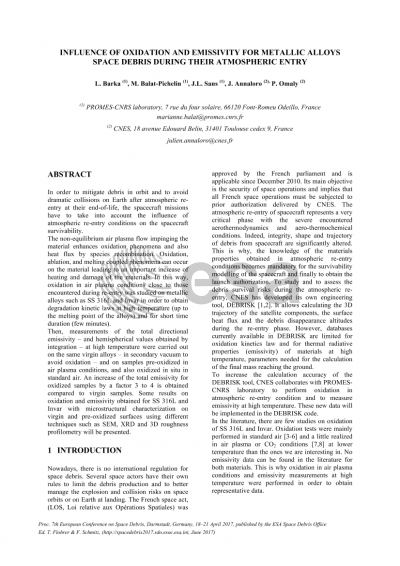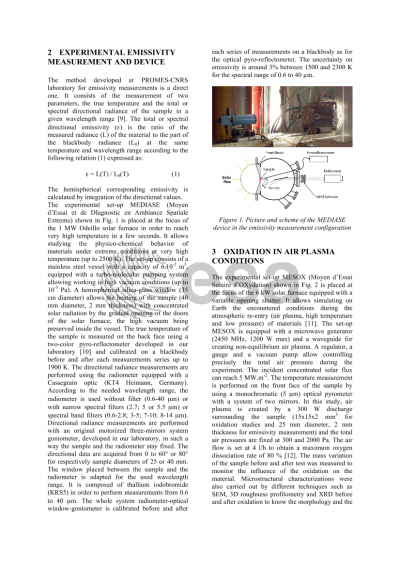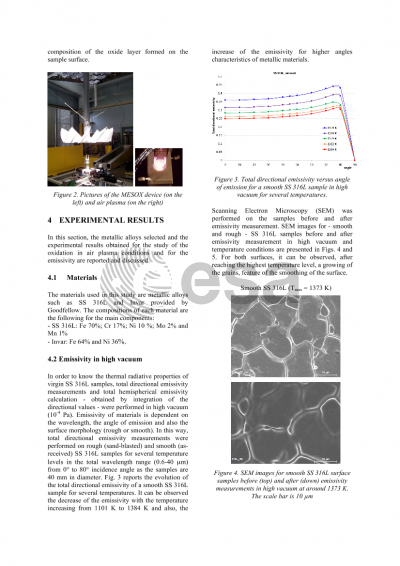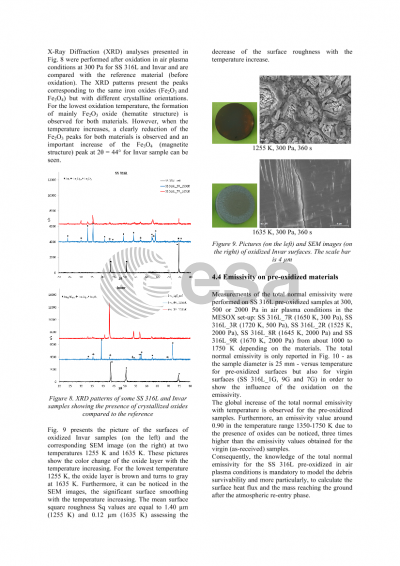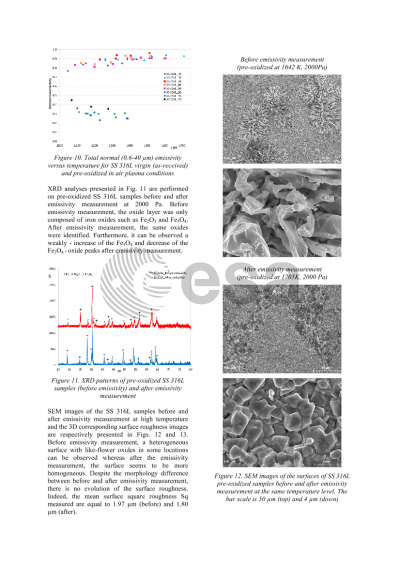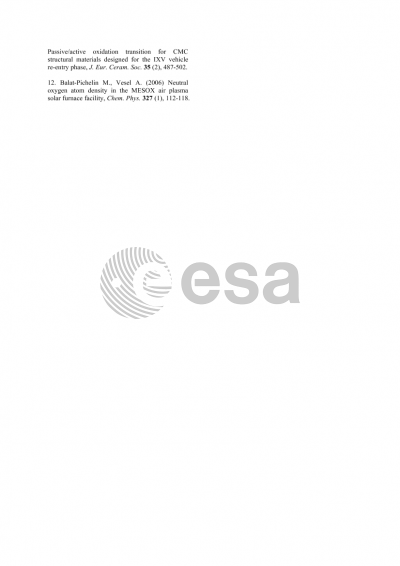Document details

Abstract
In order to mitigate debris in orbit and to avoid dramatic collisions on Earth after atmospheric re-entry at its end-of-life, the spacecraft missions have to take into account the influence of atmospheric re-entry conditions on the spacecraft survivability.
The materials to be used in the spacecraft must take into account the different new rules, in order to be mainly or totally destroyed due to the severe aero-thermodynamic and aero-thermochemical conditions encountered during the re-entry phase.
The non-equilibrium air plasma flow impinging the material enhances oxidation phenomena and also heat flux by species recombination. Oxidation, ablation, catalycity and melting coupled phenomena can occur on the material leading to an important increase of heating and damage of the materials.
In this way, oxidation in air plasma conditions, close to those encountered during re-entry, was studied using the MESOX facility available at PROMES-CNRS on metallic alloys such as TA6V, SS 316L and Invar in order to obtain degradation kinetic laws at high temperature (up to the melting point of the alloys) and for short time duration (few minutes). Then, measurements of the total directional emissivity – and hemispherical values obtained by integration – at high temperature using the MEDIASE facility of PROMES-CNRS were carried out on the same virgin alloys – in secondary vacuum to avoid oxidation – and on samples oxidized in air plasma conditions, and in situ in standard air. An increase of the total emissivity for oxidized samples by a factor 3 to 4 is obtained compared to virgin samples. This effect strongly influences the heat flux and could also act on the ablation during a trajectory and consequently on the casualty area calculation.
Some results on oxidation and emissivity obtained on SS 316L and Invar will be presented together with microstructural characterization of the samples using different techniques such as SEM, XRD and 3D roughness profilometry.
Moreover, calculation using the DEBRISK code from CNES will be performed. The properties of the materials currently available in DEBRISK are limited. Most of the time, the bibliographic origin and validity of these values remain unknown. In some cases, a property as the emissivity is set equal to 1, which leads to an overestimation of the mass reaching the ground object. To increase the accuracy of the calculation with DEBRISK - CNES that has conducted a high-temperature characterization of the main materials used in spacecraft with PROMES-CNRS laboratory - these new data will be implemented.
Preview
